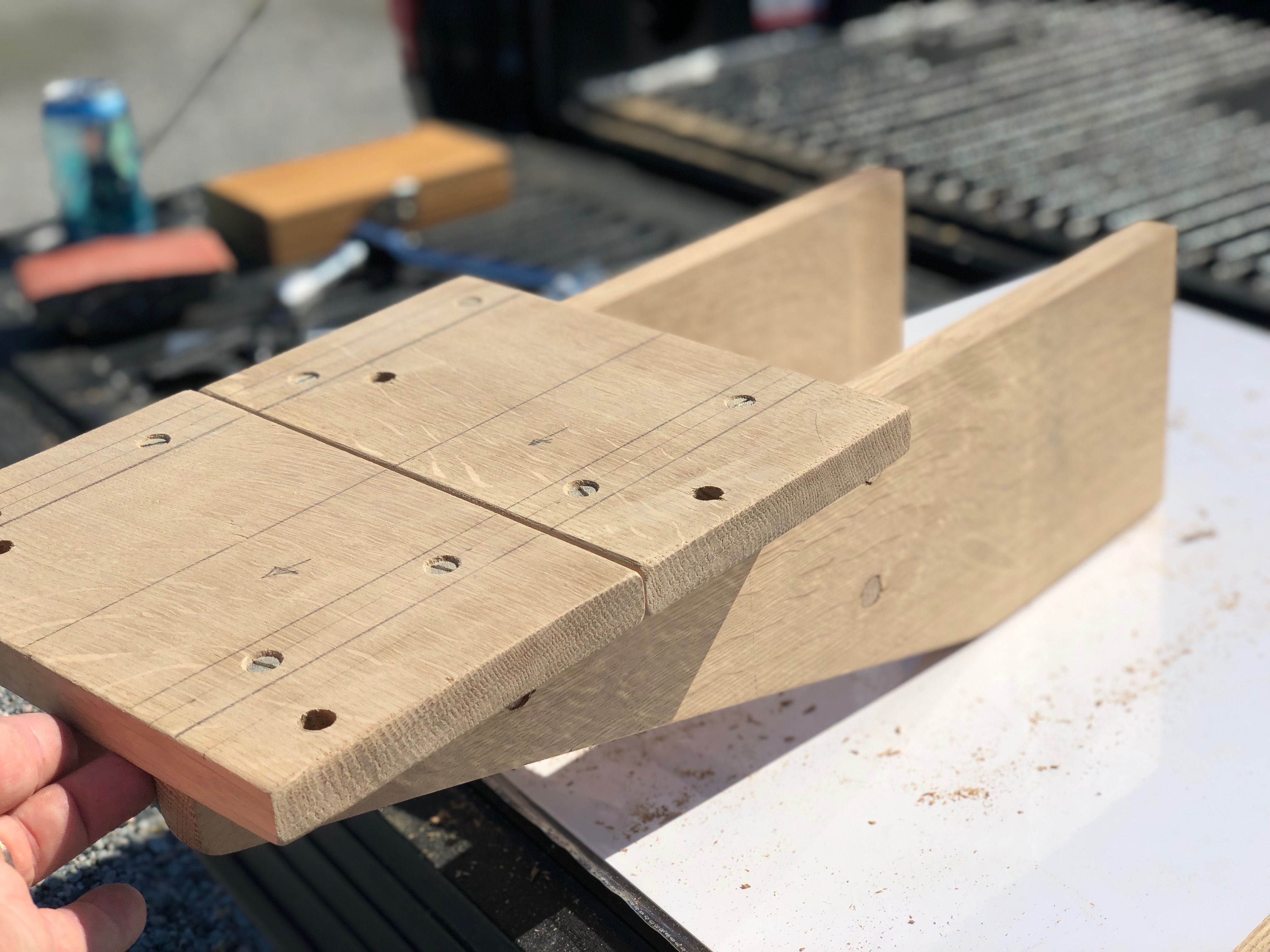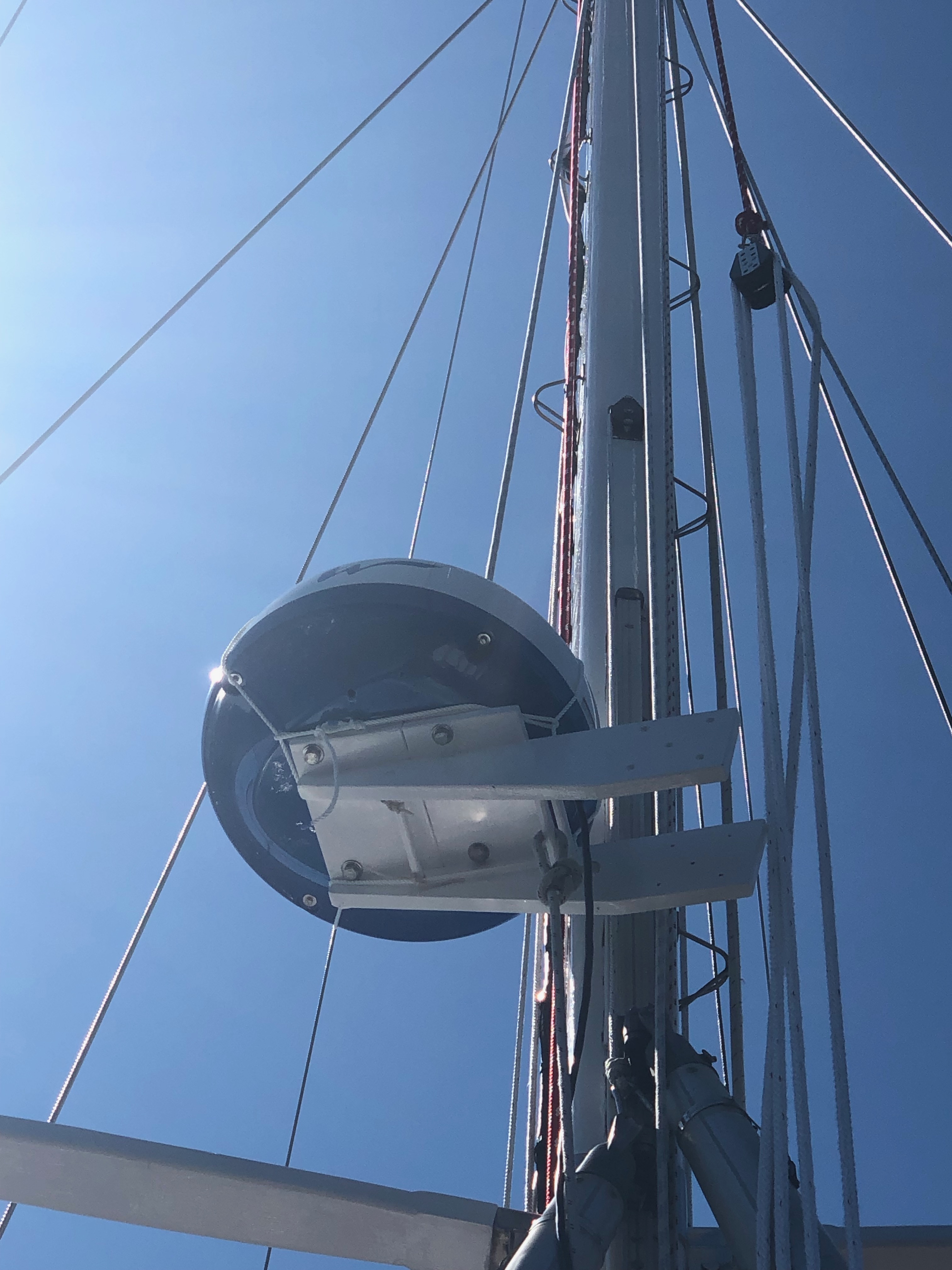Anyway, on the way to Essex we got caught out in fog so thick that we probably shouldn't have been out there at all. But there was no place to anchor, so we had to carry on, slowly, with our running lights on, blowing our lung-powered Trump air horn. This is a blow-hard type of safety signal, but blowing hard every two minutes for hours at a time gets pretty old.
But getting run down by a sport fisherman doing 20 knots was only one worry. The other concern was running over a crab pot. We'd picked one up in the Chesapeake last summer, which was bad enough. I did not relish the idea of jumping into the cold Long Island Sound to cut another once loose. So we had a very long day watching out for boats and hard-to-spot crab pots.
 |
| Foggy mooring in Essex, CT |
We have been told by people who should know that if you sail between the Bahamas and Maine a couple of times you will experience all the weather you are likely to encounter when crossing the Atlantic in May or June. Fog was something new for us (we had only encountered it on one day in the last two years, down south), and perhaps new for Petronella, since she was rather under-equipped for it. We decided to add radar, a much louder air horn, and a wet suit to our sailing kit before heading any further north.
After doing a bit of research, we discovered the Furuno 1st Watch Wireless Radar. This is one of the least expensive radar units you can buy, probably because it uses your iPad as it's display device. Just mount it on your mast, supply 12 volts, connect your iPad using wifi, and you are up and running. This sounded ingeniously simple, until I started thinking about mounting it on our rectangular wooden mast. Clearly we would need a custom stainless steel bracket to fit our mast, but could we have one made on short notice?
Nope. "Maybe by August," was what we heard from every welder we could get to answer the phone.
"Nevermind," I told Helena, confidently. "I can make one. Out of oak."
Thus committed, I got to work.
I was able to find some pretty nice kiln-dried white oak at a local hardwood dealer, who was able to run it through his jointer and planer, to minimize the amount of finishing I would have to do with my relatively small set of woodworking tools.
I used my portable bandsaw (otherwise known as a jig saw) to do most of the cutting. I had the clever idea of using oak dowels to stabilize the bottom braces, to keep them parallel and the correct distance apart (the thickness of my mast - 5 inches.)
With a morning's work, I had this:
 |
| Bracket for shelf to hold radar dome |
 |
| With the shelf installed |
Of course, painting took several days. I used Brightside, but I really don't like to use it on wood. It goes on too gloopy, and is very slow to harden. But I had it, so...
 |
| The bracket painted and bolted to the dome. |
 |
| Simple sling tied to radar for hoisting |
 |
| The radar and bracket hoisted into space, I mean place, where no radar had gone before. |
 |
| Installing radar on a fogless day. One of many, I presume! |
And here is Petronella with the radar dome proudly fixed to her mast. It just clears the staysail leech, in case you were wondering.
 |
| P with radar installed |
Here is a screen shot from the iPad radar app. Note how I have marked the position of the buoy and boat, which are about a half-mile down the river.
 |
| Screen shot of iPad radar screen. Note position of buoy and boat on the screen. The boat was moving, the buoy was not. |
And here is a photo of the same buoy and boat a few moments later:
 |
| Photo of buoy and boat a few moments later. |
Of course, we are in a mooring field literally surrounded by 50 or more boats, which you can also see on the screen. The radar also picks up the outline of the shore on either side of the river, which takes a bend at Essex.
In short, it works! I'm anxious to try it out on the Sound on a few clear days so that we can see how it works without so many obstructions and targets around. I'm sure the picture will be a lot simpler to interpret at sea.
We also installed an electric horn on the top of the hard dodger, and purchased a wetsuit, just in case.
I hope we don't need to use any of them!
Next Up: We got insurance to go transatlantic!
Great post. I would have wasted a lot of time searching for a stainless steel bracket when the white oak alternative is so obvious!!!
ReplyDelete